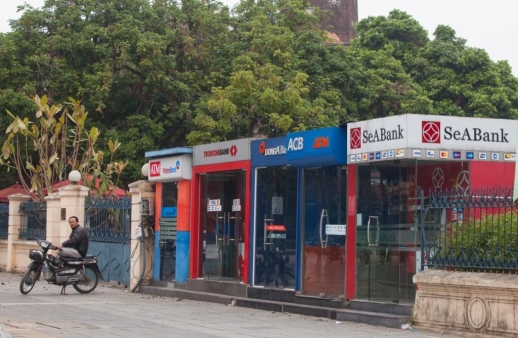
Vietnam banks' problem assets ratio reaches 7.1% in the first half of 2016
That's including the gross value of assets sold to the Vietnam Asset Management Company.
The outlook of Moody's analysts for Vietnam's banking system over the next 12-18 months is stable, as it has been since December 2014. The outlook reflects their continued expectation that the country's macroeconomic stability and resilient economic growth will continue to support the banks’ weak credit profiles.
"Stable operating environment, supported by strong economic growth. We expect that Vietnam's economy will show resilient growth, supported by robust exports and foreign investment. Real GDP growth will remain strong, with Moody’s forecasting growth of 6.1% in 2016 and 6.0% in 2017. Stable inflation and interest rates will help support domestic demand and household consumption."
Here's more from Moody's:
Asset quality will stay stable but weak, while capital buffers will continue to deteriorate because of high loan growth. We estimate a problem loan ratio of 3.8% for rated banks, based on non-performing loans (NPL) classified in categories 3 to 5 under Vietnam Accounting Standards (VAS), plus special mention loans classified in category 2 under VAS.
However, including the gross value of assets sold to the Vietnam Asset Management Company (VAMC) - where reported - would increase the problem assets ratio to 7.1% at 30 June 2016 from 6.9% at end-2015.
Legacy problem assets remain elevated, but transparency has improved. Rapid economic growth improves the recovery prospects of legacy problem assets and stabilize asset risks. Balance sheet buffers are weak, because of the size of legacy asset challenges. Credit growth — which is elevated — is outpacing internal capital generation and sources of external capital are limited.
Funding and liquidity remain stable. System liquidity is tightening moderately, because rapid lending growth is not matched by deposit growth. Our rated banks reported an average loan to deposit ratio of 81% at 30 June 2016, up from 79% at end-2015.
Nevertheless, low inflation rates and government de-dollarization policies have supported a stable environment for the funding of local currency deposits. At end-2015, market funds financed 19% of assets, down from 23% in 2012. Lower levels of interbank funding have also decreased the risk of contagion.
Profitability to stay stable but low, as credit costs offset higher pre-provision income. Net interest margins (NIMs) should show a slight compression, due to the high levels of competition in the banking system. Although loan growth has shifted to the higheryielding consumer and small- and medium-size enterprise (SME) segments, deposit rates have increased.
Bottom-line profitability will remain stable, because higher pre-provision income will be offset by elevated credit costs. In the past three years (2013-2015), credit provisions have accounted for 43%-48% of the rated banks' pre-provision income.
Government support assumptions unchanged. We assume that systemic support would be forthcoming for state and private banks, in case of need. The government’s capacity for capital injections into banks is limited, and support will mainly be in the form of liquidity assistance and regulatory forbearance.
What could change the stable outlook. The outlook could change to positive if there are systemwide recapitalizations or reforms that substantially address legacy asset quality challenges. On the other hand, the outlook could turn negative if there are signs of a build-up of macroeconomic imbalances, due to high credit growth.






















 Advertise
Advertise








